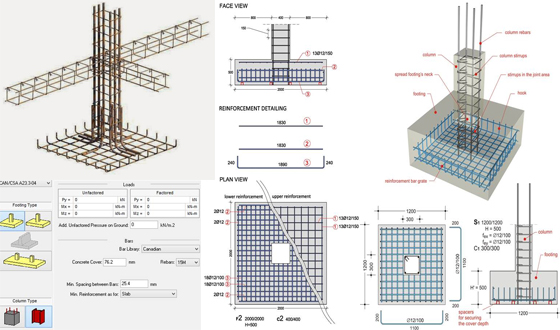
How to details Isolated Footing for Reinforcement
There are different types of foundations like isolated footing, combined footing, strip footing, raft footing, pile foundations which can be applied on the basis of structural need and states of the soil.
Reinforcement detailing of footing plays a crucial role for the type of footing and structural design of footing. A good detailing reveals the design constraint of the footing for structural strength. A good detailing of reinforcement includes subjects like cover to reinforcement on the basis of ecological studies for longevity, lowest reinforcement and bar diameters, appropriate dimensioning of footing etc.
Detailing of Isolated Footing:
Reinforcement Cover: The lowest thickness to primary reinforcement in footing should not be below 50mm if footing is adjacent to earth surface directly, and 40mm for exterior uncovered face like surface levelling PCC. If surface levelling remains unused, then it is necessary to stipulate a cover of 75mm to protect rough surface of excavation. For raft foundation, the lowest cover to reinforcement should be 75mm if stayed on PCC or directly on earth surface.
Lowest reinforcement and bar diameter: The lowest diameter for main reinforcement should not be less than 10mm.
Detailing method of Isolated Footing: It is suggested that foundation must be detailed in both plan and elevation in drawings.
The isolated footing usually belongs to square or rectangular in plan to comply with structural need and forces operate on the column. Besides, circular or other shapes are also applied for isolated footings.

Ref.: theconstructor.org

